Flower of Life Symbols
Found in Japan
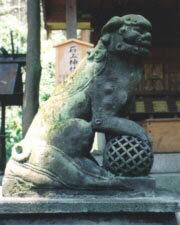
Two Articles by:
Lyssa Royal Holt
Kara Yamaguchi
Article 1
The Flower of Life Symbol in Japan
Report by Lyssa Royal Holt
In July 1998 I completed my eighth year of conducting seminars and private consultations in Japan. Each year my Japanese friends take me to sacred power spots that they feel guided to visit. I have traveled from the southern tip of Japan (the Hiroshima area) to the northern tip of Aomori and so much in between.
This year my interpreter, Ms. Kazumi Hoshina, took twelve friends including myself to Kamakura - a well known tourist spot because of its huge statue of Buddha and many temples and shrines. Instead of visiting these tourist areas, we went to some lesser known Buddhist temples that Kazumi felt were ancient ceremonial sites of significance. She has an uncanny Higher Self that continuously tells her exact locations to visit which later prove to be intense power spots that profoundly affect those of us who visit.
Our first stop was Goryo-Jinja, a Buddhist temple away from the throngs of tourists in Kamakura. As we ascended the steep steps to the temple at the top of the hill, I wondered what exciting adventures and discoveries we would have that day. Upon walking around the grounds of the temple, it seemed at first to be typical of the many thousands of temples in Japan - impeccable architecture that evokes a deep sense of spirituality and reverence. The Buddhist priest was performing a ceremony for a newborn child and his family. Other than that, we were the only ones present.
Kazumi asked us to walk around, feel the energy, and use our intuitive perceptions to access any esoteric information about this site. My guides directed me to a certain spot near some lion statues. As I stood there, my guides told me that this was an ancient ceremonial site of ascension well before the Buddhist temple was built. It took a moment to realize what I was staring at as my guides were telling me this. There, under the paw of the mythological lion figure, was the Flower of Life sphere! [The photo accompanying this article was taken in July 1998 at Goryo-Jinja. Though the vesica pisces and petals of the flower are obvious in person, it is difficult to see clearly in the photo.]
For those of you not familiar with the Flower of Life, it is a sacred geometric template that contains the blueprint for all other geometrical forms and thus for consciousness itself. In ancient times (most specifically in Egyptian mystery schools) initiates learned sacred geometry as a path to spiritual awakening and the Flower of Life symbol was known to be among the most sacred because of what it represents -- the unity of all consciousness and life within the universe.
My husband Ron Holt (Director of the Flower of Life Research Organization) and I enjoy traveling the world looking for the Flower of Life symbol in temples. Other than in Egypt we have thus far found no temples with this sacred symbol. However, there it was in front of my eyes...in a location my guides had told me moments before was an ancient ceremonial site of ascension.
Excitedly, I relayed this to Kazumi and she translated it into Japanese for the group. When she did, an amazing thing happened. I said the words, "This was an ancient ceremonial site of ascension and the Flower of Life symbol is frequently found in these sites." As soon as I completed the sentence, the temple priest suddenly began playing the ceremonial drum in a perfectly timed gesture that gave each of us goosebumps. Once we understood the importance of that statement, the priest stopped playing the drum. It was one of those synchronistic experiences that are difficult to explain, but powerful to experience.
Later that day we made a visit to Hokoku-ji, commonly referred to as Take-dera ("Bamboo Temple"). This temple sits on the grounds of an amazingly pristine bamboo forest. The bamboo trees have an average width of about 6-8 inches each and are perhaps 50 feet high at a minimum. This place was an old Zen Buddhist temple from the 14th century. As you walk into the bamboo forest, a tea house sits amidst the trees and serves traditional green tea. Visitors sit staring out at the trees in hushed silence. The beauty of this spot is nearly impossible to describe.
As Kazumi and I sat drinking our green tea, I heard a male voice loudly to my right (in perfect American English) say, "Flower of Life." I quickly looked to my right but there were only three Japanese tourists seated there. They were all speaking Japanese quietly or sitting in silent contemplation. Thinking I must have imagined it, I shrugged it off. However, a few minutes later my curiosity got the better of me. I told Kazumi what had happened. She looked incredulous. She said she heard the same thing, only she heard a female voice rather than the male one I had heard. Since this was "impossible," we realized that perhaps the experience at Goryo-Jinja earlier was one that had a deeper significance than we realized.
Perhaps as we begin to remember more and more of our spiritual heritage on Earth and begin to embrace our connections to all life, the Flower of Life information as taught to the ancients will begin to resurface in sacred sites all over the world. This experience still remains a mystery but seems to be a piece of an even greater puzzle. It is very possible that even today's Flower of Life initiates do not yet realize the significance of the information that they have learned. Only time will tell.
Article and photo by Lyssa Royal Holt, Education Director for Flower of Life Research
Article 2
Flower of Life and the Mysteries of Ancient Japan
by Kara Yamaguchi
I first became conscious of the Flower of Life symbol through the work of Drunvalo Melchizedek in early 2001 and was immediately magnetized by its mysterious message. As with all "accidents" on our spiritual path, the synchronicity which followed my first encounter with the symbol confirmed the need for me to pursue my interest with firm intent! I was delighted to discover the article by Lyssa Royal about the Flower of Life symbol in Japan where I currently reside, and I became almost driven to explore whether or not other sacred sites in Japan would also reveal a connection to the symbol.
One morning after a lively discussion on the phone about the Flower of Life, I decided to take a break from Tokyo and head out to a place called Nikko, one of my favorite places to re-energize and connect with the energy of ancient Japan. Nikko's mountains and ancient forests have been honored since 782 and it stands today as an important reminder of Japan's dynamic past and spiritual traditions.
Over the years I have had numerous opportunities to visit Nikko, so you can imagine my surprise that morning to find the Flower of Life symbol almost jumping out at me from the awnings of Nikko's most famous shrine, Toshogu. I am not quite sure how I had failed to see it up to that moment! As you can see from the photos the symbol is not featured as a specific design in itself, but has been used almost as a background design to enhance other symbols. What surprised me the most was the more I looked around in the shrine grounds, the more I found the symbol either in its original form or used in a more stylized version. It was so exciting to find more evidence of the Flower of Life in Japan and I wondered who [used it] and why the symbol had been used. Unfortunately my inquiries to one of the priests at the shrine did not yield any clues or insights.
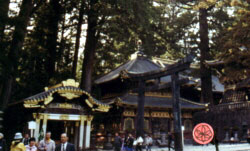
The grounds of Toshogu Shrine in Nikko. FOL symbol was found here
(near red circle) among other locations.
After this initial discovery, I then started to look EVERYWHERE for the Flower of Life while visiting sacred areas in Japan, and while I have found other stylized versions, Nikko remains unsurpassed in terms of authenticity so far. I am also unable at this stage to identify any particular connections of the symbol to either Japanese Shintoism or Buddhism, Japan's two prominent religions. The only connection I have sensed intuitively is a feeling that Ancient Egypt and the ancient world in Japan share some kind of direct connection. The use of gold and vibrant colors in Japanese art, combined with the architectural styles and overall exquisite sense of beauty, has prompted my thoughts of a possible connection with Egypt on many occasions. Maybe someone can confirm this connection for me.
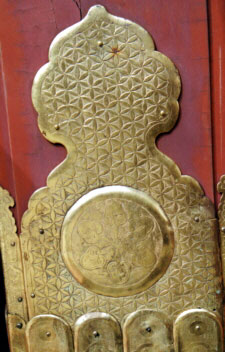
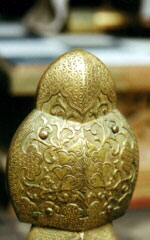 Some of the stylized FOL patterns used as backgrounds, in gold.
Some of the stylized FOL patterns used as backgrounds, in gold.
From Toshogu Shrine in Nikko
For anyone on their spiritual path, Japan offers many opportunities to connect with the invisible world and allow us to sense our ancient past. I myself am only just beginning to see how rich the mystery of Japan still lingers at sites remaining from ancient times, whispering a promise of Japan's spiritual reawakening as she labors through her modern-day crisis. The spirit of Japan today feels restless and fragile, as she struggles to find an identity again and rebalance the staggering toll that has been exacted on the environment after years of economic expansion.
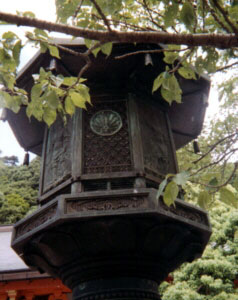
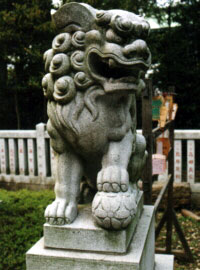
FOL pattern (though hard to see) is found as a background on the metal of this lantern. The more common "FOL sphere" is seen under the lion's paw. The lantern photo was taken in Kyoto, at Mt. Kurama, a well-known power spot in Japan connected to Sanat Kumara. This power spot is widely known to be the place where Reiki was channeled. The photo on the right was taken at Enoshima, Kamakura.
In the tranquil sacred forests of Japan's mountains, you can still FEEL an ever present energy however, as ancient as the giant trees that stand majestic and silent, hopefully awaiting an age where Japan's spirit will soar once more!
Article and photos by Kara Yamaguchi, Tokyo, Japan.
Zdroj: FOLR





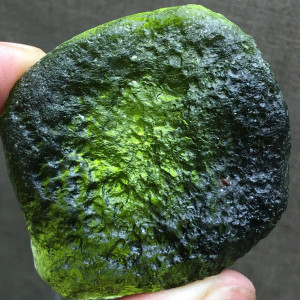




























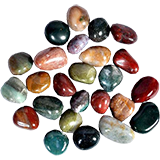











Pokud chcete ocenit naši práci, můžete ZDE